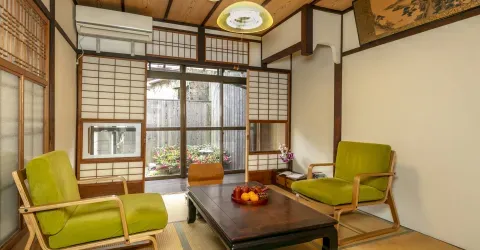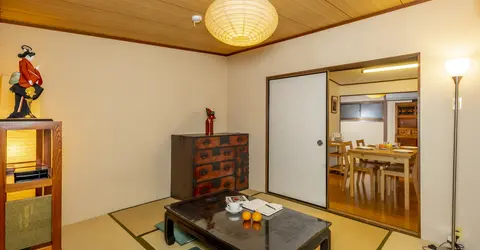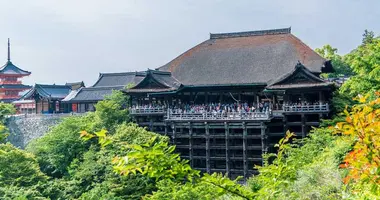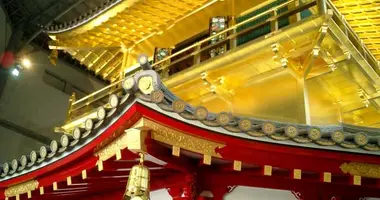Ohara Guide Kyoto
- Published on : 05/03/2024
- by : Japan Experience
- Youtube

Sanzen-in Temple, Ohara, Kyoto
Nestled in the mountains of northern Kyoto, about one hour from Kyoto Station, lies the picturesque rural town of Ohara. Known for its natural beauty, historical temples, and spiritual significance, Ohara offers a peaceful retreat from the bustling city center. This serene village is famous for its cluster of Tendai-sect temples, renowned for their stunning autumn colors and connections to Buddhist chanting and music. Ohara's unique microclimate makes it cooler in summer and colder in winter than downtown Kyoto, offering visitors a refreshing escape and seasonal beauty year-round.
Main Attractions in Ohara
Ohara is home to several notable temples and attractions that showcase its rich history and natural beauty:
Sanzen-in Temple: This Tendai sect temple is the crown jewel of Ohara. Established by Saicho, the founder of Tendai Buddhism, in the late 8th century, Sanzen-in is renowned for its moss gardens, Buddhist statuary, and stunning autumn foliage. As one of Kyoto's five Monzeki Temples, it has historical ties to the Imperial family.
Hosen-in Temple: Known as one of the "Bloody Temples of Kyoto," Hosen-in features ceiling boards from Fushimi Castle, stained with the blood of warriors who committed ritual suicide in 1600. The temple is also famous for its serene garden and massive 700-year-old pine tree.
Shorin-in Temple: Founded in 1013, Shorin-in played a crucial role in establishing Ohara as the center of shomyo (Buddhist chanting) in Japan. Its golden statue of Amida Buddha is a must-see attraction.
Jikko-in Temple: This temple is known for its Edo Period paintings and beautiful gardens. The Keishin-en Garden, dating from the late Edo Period, features a koi-filled pond and symbolic elements representing longevity and happiness.
Jakko-in Temple: With a history dating back to the 6th century, Jakko-in has served as a nunnery since 1186. It's associated with the tragic tale of Empress Kenreimon-in and houses a striking statue of Jizo, the Buddhist patron saint of children and travelers.
Seasonal Highlights and Best Times to Visit
Ohara offers unique experiences throughout the year:
Spring: The village comes alive with cherry blossoms, hydrangeas, and azaleas. It's an ideal time for leisurely walks and enjoying the fresh mountain air.
Summer: While cooler than central Kyoto, summer in Ohara is perfect for exploring the lush green landscapes and enjoying the refreshing atmosphere of the temples.
Autumn: This is arguably the most popular season to visit Ohara. The autumn colors here are spectacular, with the foliage typically peaking about a week earlier than in central Kyoto. The vivid reds and golds of the maple trees create a breathtaking backdrop for temple visits.
Winter: While colder, winter in Ohara offers a serene, sometimes snow-covered landscape that's particularly beautiful and less crowded.

Sanzen-in Temple, Ohara, Kyoto
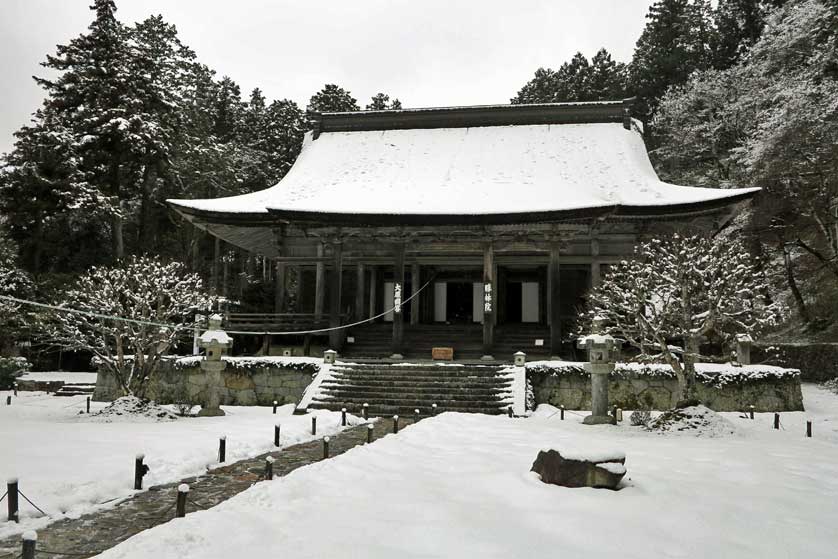
Shorin-in Temple, Ohara, Kyoto
Getting to Ohara
Reaching Ohara from central Kyoto is straightforward:
- From Kyoto Station, take Kyoto Bus #17 directly to Ohara. The journey takes about 60-70 minutes.
- Alternatively, take the Kyoto subway Karasuma Line to its terminal station Kokusaikaikan, then transfer to Kyoto Bus #19 to Ohara.
- From Demachiyanagi Station, you can also catch Kyoto Bus #16 or #17 to Ohara.
The bus ride offers scenic views of the Kyoto countryside, gradually ascending into the mountains as you approach Ohara.
Exploring Ohara's Temples
Ohara's temples are not just places of worship but also repositories of art, history, and natural beauty:
Sanzen-in Temple: Allow at least an hour to explore its extensive grounds. Don't miss the Yusei-en garden with its carpet of moss and the Ojo Gokuraku-in, housing a famous statue of Amida Buddha.
Hosen-in Temple: Famous for its blood-stained ceiling and garden view framed perfectly by the temple's architecture. Enjoy a cup of matcha tea while contemplating the garden's centerpiece - a massive pine tree.
Shorin-in Temple: Though smaller, it's significant in the history of shomyo. The golden Amida Buddha statue is its highlight.
Jikko-in Temple: Admire the Edo Period paintings and explore the symbolism-rich garden. The pond shaped like the Chinese character for "heart" is particularly interesting.
Raigo-in Temple: Associated with the origins of Pure Land or Amida Buddhism, this temple offers insights into the development of Buddhist thought in Japan.

Raigo-in Temple in Ohara, Kyoto, is associated with the priest Ryonin
Nature and Outdoor Activities
Ohara's natural surroundings offer plenty of opportunities for outdoor enthusiasts:
Hiking: There are several hiking trails in the mountains surrounding Ohara, including routes that connect to Mt. Hiei.
Otonashi Waterfall: A short walk from Sanzen-in, this "soundless" waterfall is steeped in legend and offers a peaceful spot for contemplation.
Shiso Fields: Ohara is known for its cultivation of shiso (perilla), used in making the area's famous pickled vegetables. The fields offer a unique agricultural landscape.
Seasonal Nature Viewing: Whether it's cherry blossoms in spring, lush greenery in summer, colorful foliage in autumn, or snow-covered landscapes in winter, Ohara's natural beauty is always on display.
Local Specialties and Dining
Ohara offers unique culinary experiences:
Tsukemono: The area is famous for its pickled vegetables, especially shibazuke, made with eggplant, cucumbers, and shiso leaves. Visit local shops to sample and purchase these specialties.
Shiso Ice Cream: A unique local treat that combines the herb's distinct flavor with creamy ice cream.
Local Restaurants: Several restaurants along the main street offer traditional Japanese cuisine using local ingredients. Some ryokan in the area also serve meals to day visitors.
Doi Tsukemono: The main branch of this famous Kyoto pickles shop is located in Ohara, offering a chance to enjoy fresh tsukemono at the source.

The approach to Sanzen-in Temple in winter, Kyoto, Japan
Planning Your Visit: Tips and Recommendations
To make the most of your trip to Ohara:
- Start early to avoid crowds, especially during peak seasons like autumn.
- Wear comfortable walking shoes as there's considerable walking involved.
- Consider staying overnight in one of Ohara's ryokan to fully experience the area's tranquility.
- Visit on a weekday if possible to avoid weekend crowds.
- Bring cash, as not all places accept credit cards.
- Check temple opening hours in advance, as they may vary seasonally.
- Consider purchasing a combined ticket if you plan to visit multiple temples.
Ohara offers a perfect blend of natural beauty, spiritual heritage, and rural charm, making it an essential destination for those seeking to experience a different side of Kyoto. Whether you're interested in Buddhist history, Japanese gardens, or simply want to escape the city's hustle and bustle, Ohara promises a memorable and rejuvenating experience.
